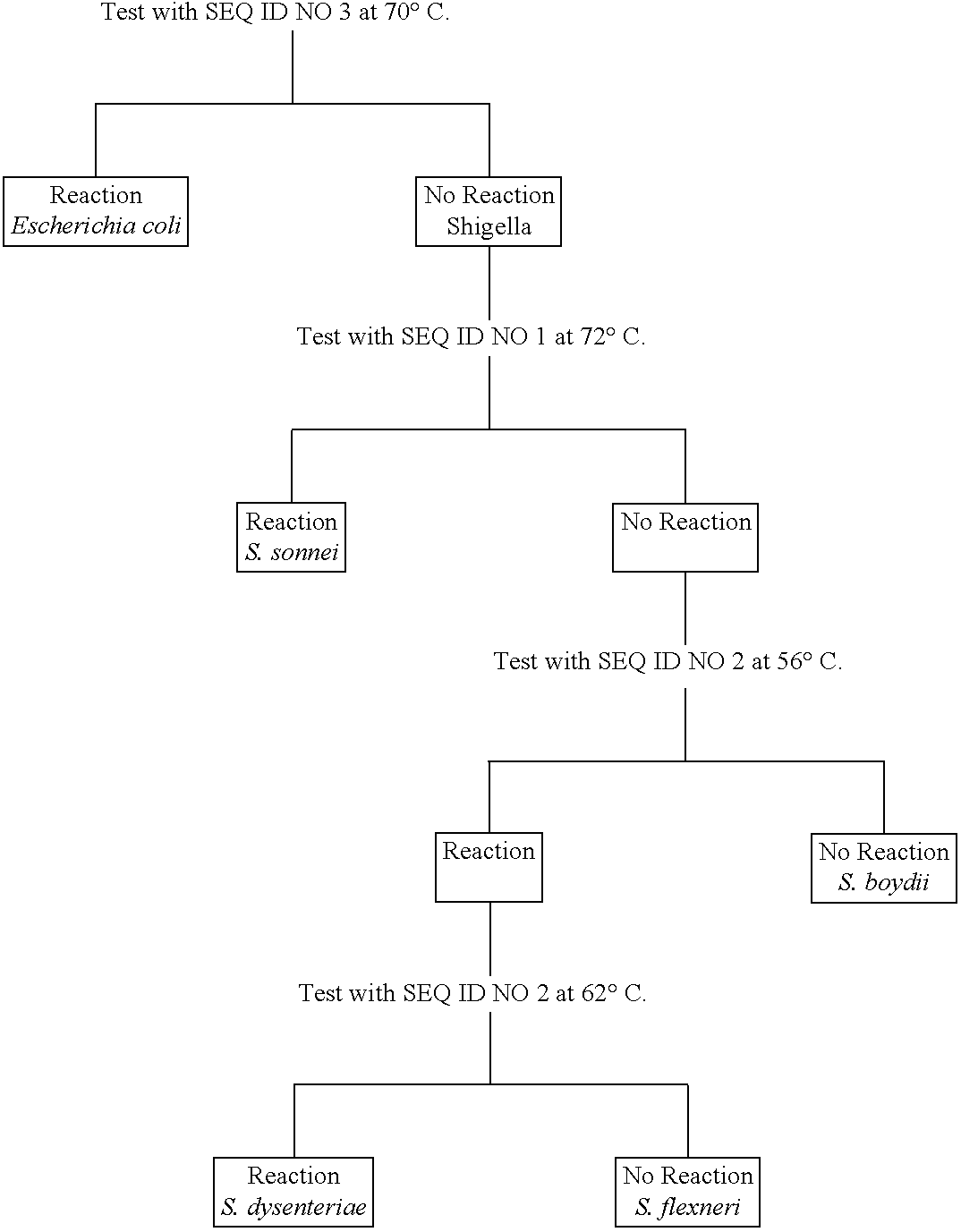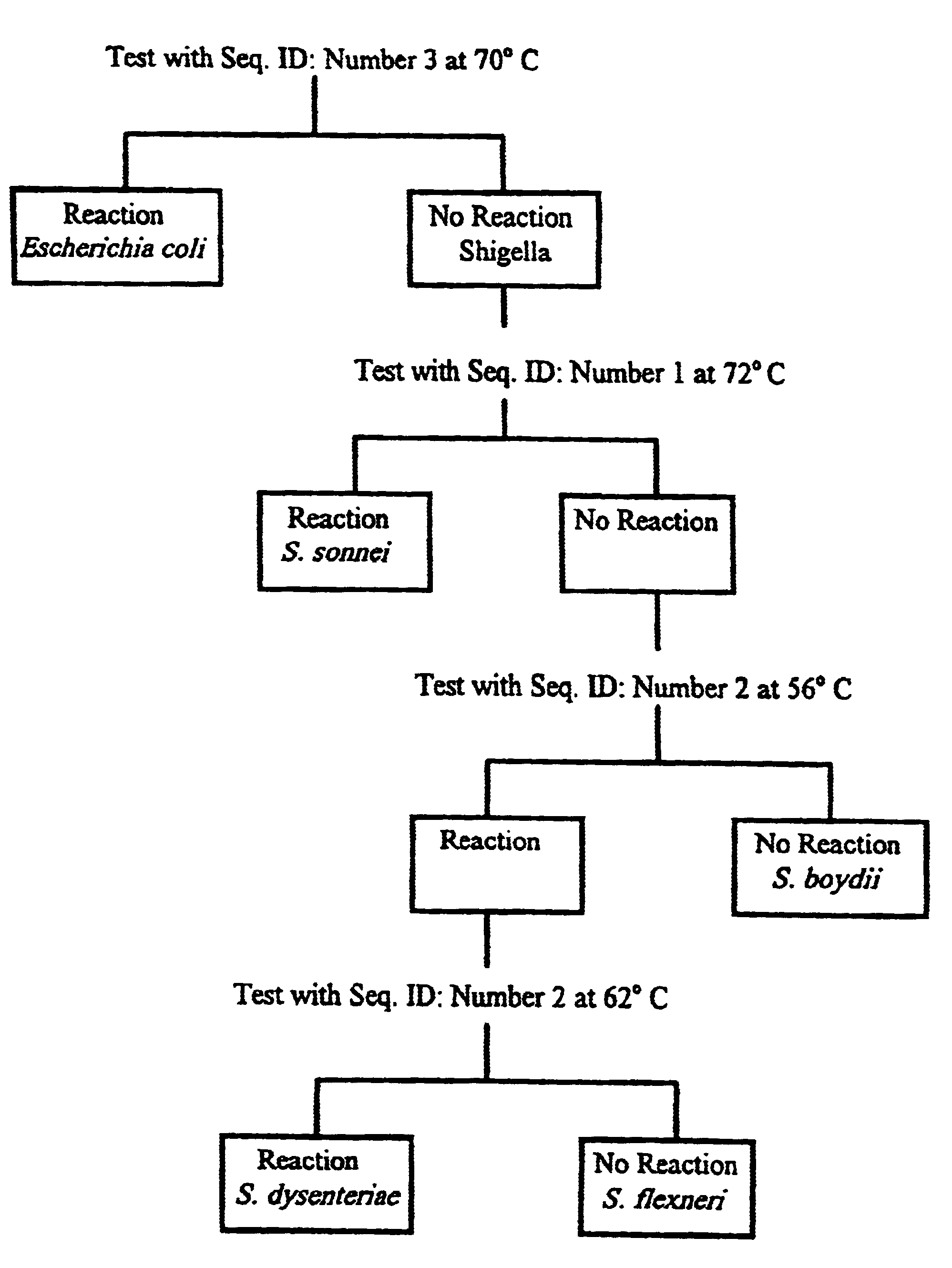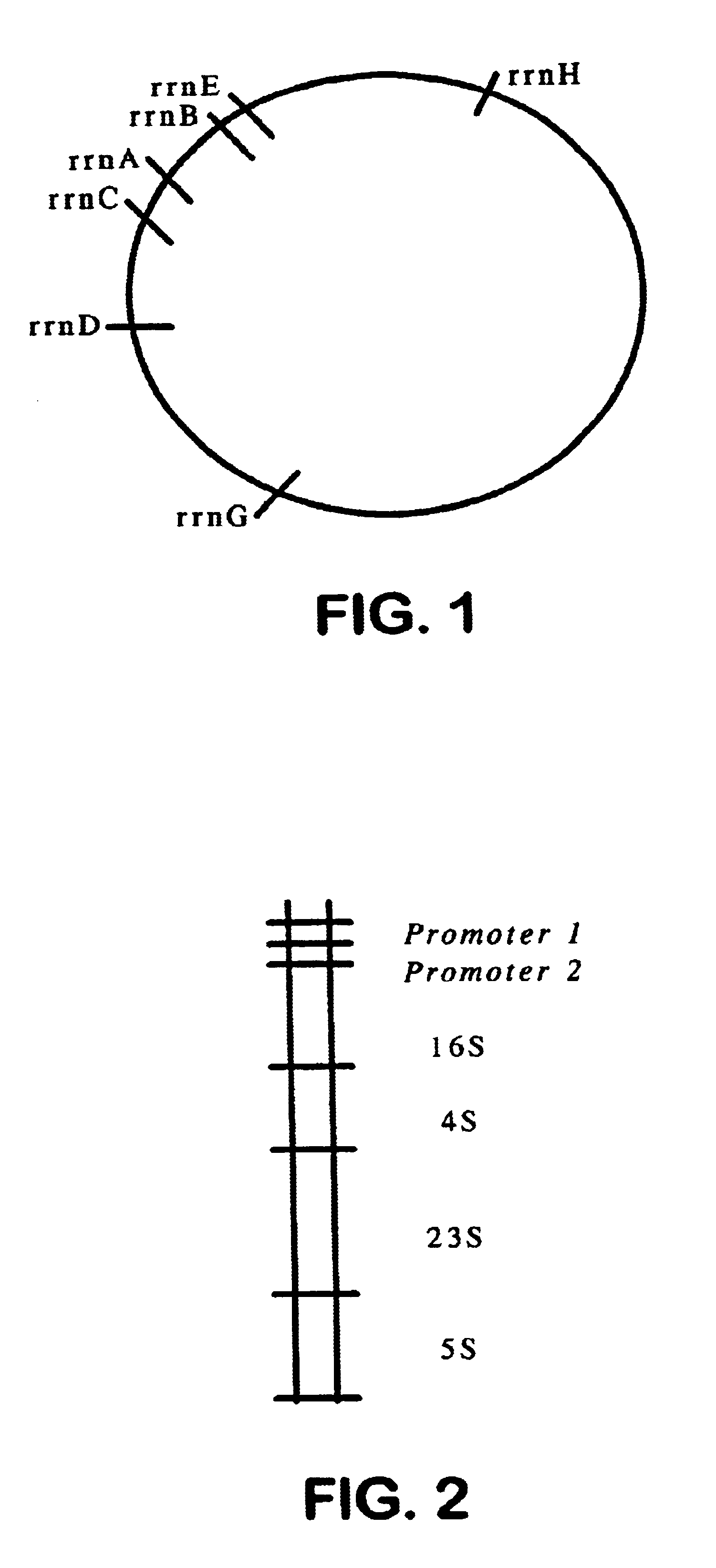Methods for identifying species of Shigella and E. coli using operon sequence analysis
a technology of operon sequence and shigella, which is applied in the field of methods for identifying species of shigella and e. coli using operon sequence analysis, can solve the problems of complicated recommendations, difficult to circumvent difficult, time-consuming and expensive procedures, and achieve the effect of simplifying the determination of stringency for rrn operon analysis
- Summary
- Abstract
- Description
- Claims
- Application Information
AI Technical Summary
Benefits of technology
Problems solved by technology
Method used
Image
Examples
example 1
Production of a Probe that will Hybridize and Distinguish E. coli and S. sonnei from other Species of Shigella
A probe sequence (SEQ ID NO: 1) was identified for the 71-100 nucleotide position of the rrn operon 16S subsequence of S. boydii. This regional sequence has not been reported for any of the corresponding rrn operon 16S subsequences of E. coli, for the rrn operon subsequence of another strain of S. boydii, or for the corresponding rrn operon subsequences for other species of Shigella. Without hybridization analysis of the rrn operons in E. coli and Shigella, it would be difficult to predict the extent to which, if any, this probe would react with these organisms. The measured T.sub.m for the probe in 1 M NaCl is 72.degree. C. whereas the calculated T.sub.m is 64.degree. C.
Accordingly, DNA samples from each species of Shigella and from E. coli were prepared by standard phenol extraction (F. Ausebel et. al., Eds. Current Protocols in Molecular Biology, John Wiley & Sons, New Yo...
example 2
Production of a Probe that will Hybridize and Distinguish Shigella sonnei and E. coli from other Species of Shigella or S. dysenteriae from E. coli and other Species of Shigella
Probe SEQ. ID NO. 2 is based on a sequence determined from S. dysenteriae. This probe has a calculated T.sub.m of 58.degree. C. and a measured T.sub.m in 1 M NaCl of 66.degree. C.
This probe also fails to distinguish rrn operon subsequences of either genus or species. At 56.degree. C. it reacts with E. coli and S. dysenteriae, S. flexneri, and S. sonnei but not with S. boydii. At 66.degree. C. it still reacts with two different species, S. sonnei and E. coli, but not with other Shigella species, thereby failing to distinguish a specific taxonomic group. Under the most stringent hybridization conditions, this probe fails to react with S. dysenteriae, the organism from which the probe sequence was derived.
example 3
Production of a Probe that will Hybridize and Distinguish E. coli from Shigella
The probe based on SEQ. ID NO. 3 is derived from a S. sonnei sequence, with a calculated T.sub.m of 62.degree. C. and a measured T.sub.m in 1 M NaCl of 70.degree. C.
This probe should show homology with the S. sonnei operon 16S subsequence but not with any of the corresponding E. coli operon 16S subsequences. Nevertheless, the probe crosses genus and species categories at 66.degree. and hybridizes at 70.degree. with E coli operon 16S subsequences but not with S. sonnei operon 16S subsequences from which the probe was derived.
PUM
| Property | Measurement | Unit |
|---|---|---|
| Tm | aaaaa | aaaaa |
| Tm | aaaaa | aaaaa |
| Tm | aaaaa | aaaaa |
Abstract
Description
Claims
Application Information
 Login to View More
Login to View More - R&D
- Intellectual Property
- Life Sciences
- Materials
- Tech Scout
- Unparalleled Data Quality
- Higher Quality Content
- 60% Fewer Hallucinations
Browse by: Latest US Patents, China's latest patents, Technical Efficacy Thesaurus, Application Domain, Technology Topic, Popular Technical Reports.
© 2025 PatSnap. All rights reserved.Legal|Privacy policy|Modern Slavery Act Transparency Statement|Sitemap|About US| Contact US: help@patsnap.com



